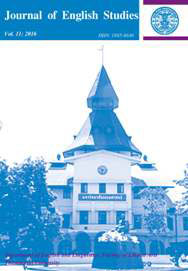A Comparison of Moves and the Sequence of Moves in Research Abstracts in Standard and Predatory Journals
Main Article Content
Abstract
The purpose of the recent study was to compare rhetorical moves and move sequences in scientific research articles published by standard and predatory journals. The corpus consisted of 100 research abstracts (50 standard and 50 predatory abstracts) published between 2011 and 2015. The abstracts were analyzed based on Santos’s (1996) move model consisting of five main moves: ‘Situating the research’, ‘Presenting the research’, ‘Describing the methodology’, ‘Summarizing the results’, and ‘Discussing the research’. To increase the reliability of the analysis, three inter-raters were invited to verify the data. The findings show five moves in two corpora. All moves in the standard corpus occurred more than 60% of the time and are considered as conventional moves. However, four moves in the predatory journal abstracts [Move 3 or ‘Describing the methodology’ (94%), Move 4 or ‘Summarizing the results’ (82%), Move 2 or ‘Presenting the research’ (68%), and Move 5 or ‘Discussing the research’ (64%)] occurred as conventional moves; Move 1, or ‘Situating the research’,which occurred in only 48% of cases, was an exception. In addition, 50 abstracts in the standard corpus exhibited 26 move sequences; on the contrary, in the predatory corpus of 50 abstracts, 41 move sequenceswere found. The findings reveal that moves and move sequences of predatory abstracts are varied and do not conform to those found instandard journals. Thus, it can be concluded that move analysis may be used to distinguish between standard (peer-reviewed) journals and predatory (non-peer-reviewed) journals.
Keywords: Move analysis, research abstract, scientific research
article, predatory journals


